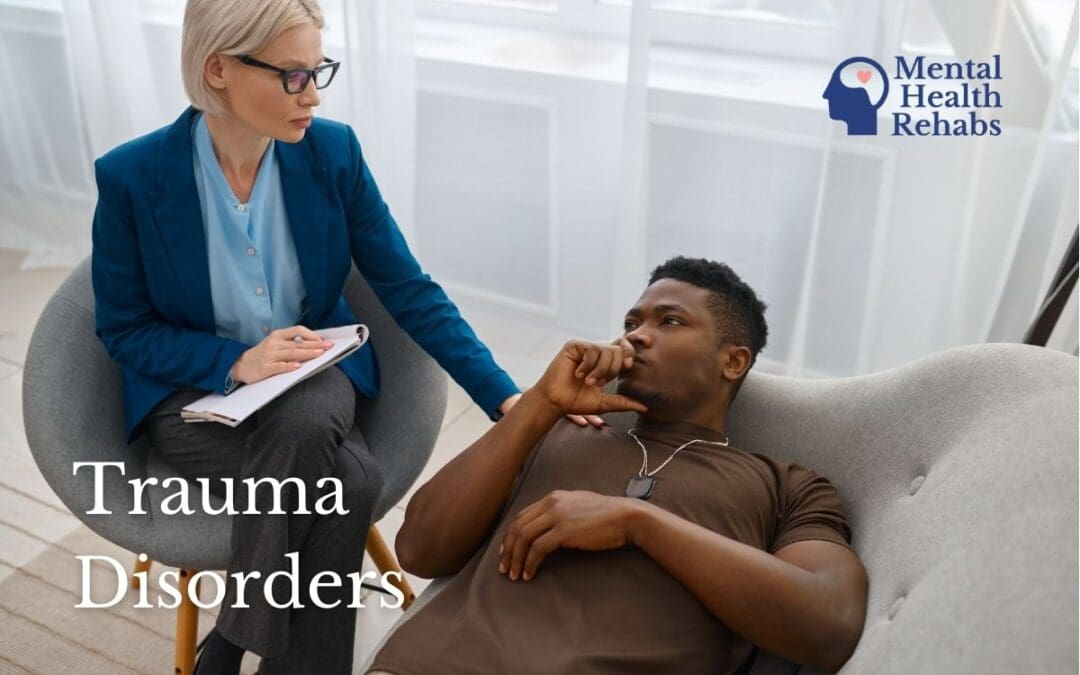Trauma comes in different faces and forms. At its most basic level, trauma is a response to a deeply distressing or disturbing experience. These experiences can be a one-time event like an accident or prolonged periods of stress, such as ongoing domestic abuse or living in a war-torn region.
While it’s natural to react to trauma, the effects of trauma sometimes linger, causing impairment and interfering with daily functioning. When this happens, it’s known as a trauma-related disorder.
There are numerous types of trauma-related mental health disorders. These are recognized by the Diagnostic and Statistical Manual of Mental Disorders, 5th edition (DSM-5).
1. Post-Traumatic Stress Disorder (PTSD)
By far the most recognized type of trauma disorder, PTSD can happen following a traumatic event threatening someone’s life or safety. It’s characterized by a combination of intrusive memories or flashbacks of the event, avoidance of the event, negative mood changes, and heightened reactivity. It’s important to note that you don’t have to survive a traumatic event to develop PTSD. Sometimes just learning that a friend or family member experienced trauma is enough to trigger it.
2. Reactive Attachment Disorder (RAD)
RAD often results from severe neglect or lack of consistent caregiving in early childhood. It’s one of the most common mental illnesses caused by childhood trauma. Symptoms include the inability to form appropriate, healthy emotional attachments. Children with RAD usually don’t look for or respond to comfort and have difficulty expressing emotions with others.
3. Disinhibited Social Engagement Disorder (DSED)
Similar to RAD, disinhibited social engagement disorder is an attachment disorder. It’s linked to early-life neglect or inconsistency in caregiving. However, unlike RAD, it’s characterized by attention-seeking behavior, showing a lack of selectivity or caution in social interactions. Children with DSED may engage in behaviors that are not age-appropriate or culturally acceptable, have an intense excitement over meeting new people, and have the willingness to leave a safe place or situation with a stranger.
4. Acute Stress Disorder (ASD)
ASD typically happens within a month of a traumatic event, such as death, threats to oneself or others, or serious injury. It’s very similar to PTSD. However, acute stress disorder is often temporary, lasting several days to a month. Anywhere between 6 to 33% of people will experience ASD after a traumatic episode. Some people who experience ASD may go on to develop PTSD.
5. Adjustment Disorder
Adjustment disorder happens when someone has difficulty coping after a stressful event. Events that can trigger this disorder include the passing of a friend or family member, divorce, major life changes, illness, sudden disasters, and even financial instability. Symptoms include depression, anxiety, and some behavioral changes. Most symptoms appear within three months of the stressful event.
6. Unspecified Trauma- and Stressor-Related Disorder
This diagnosis is reserved for cases with trauma-related symptoms but doesn’t meet the full criteria for a specific trauma disorder. This includes individuals who experienced a traumatic event and showed some symptoms but not the full range needed for a specific diagnosis.
7. Other Trauma Linked Disorders
While not classified as trauma disorders, several other mental health conditions can be linked to traumatic experiences. For example:
- Anxiety disorders
- Substance use disorders
- Depressive disorders
- Personality disorders
- Dissociative disorders (formerly known as multiple personality disorder)
Symptoms of Trauma-Related Disorders
While each type of trauma disorder has its own set of symptoms, the DSM-5 indicates that most trauma-related disorders exhibit:
- General unhappiness or dissatisfaction (dysphoria)
- Diminished ability to experience pleasure (anhedonia)
- Dissociation
- Aggression
Furthermore, you may also notice symptoms such as mood swings, self-harm, compulsive behaviors, substance misuse, physical pain, intrusive thoughts, and social withdrawal.
Living With Trauma and Finding Help
Recognizing the different types of trauma disorders broadens our understanding of trauma’s impact. By learning to identify these disorders, we can focus on targeted interventions to help restore someone’s well-being faster.
Over 223 million people in the United States have experienced a traumatic event in their lives.
Treatment for trauma-related disorders often includes a combination of:
- Psychotherapy or talk therapy
- Cognitive behavioral therapy (CBT)
- Trauma-focused cognitive behavioral therapy (TF-CBT)
- Cognitive therapy (CT)
- Eye movement desensitization and reprocessing therapy (EMDR)
- Group therapy
- Animal therapy
- Medications for symptoms of depression or anxiety
While trauma can feel incredibly isolating, remember you’re not alone. If you or someone you love has experienced trauma and believe you may be living with a trauma-related disorder, please seek help. Talking with a healthcare professional can be a helpful first step toward getting support.

